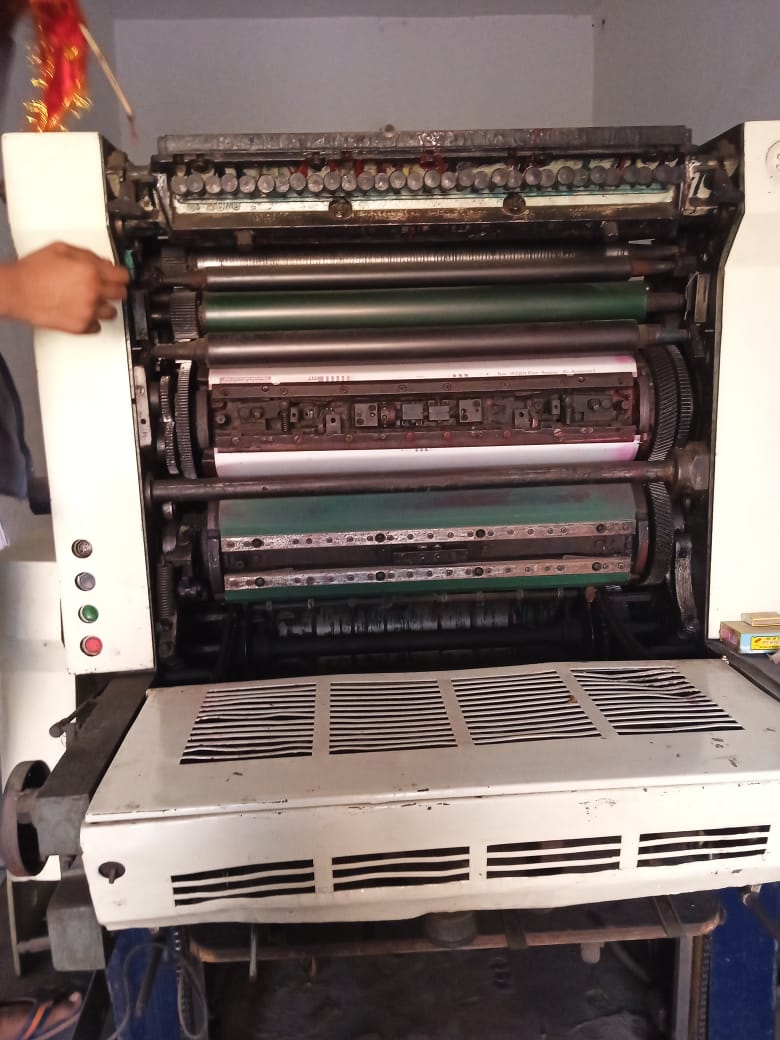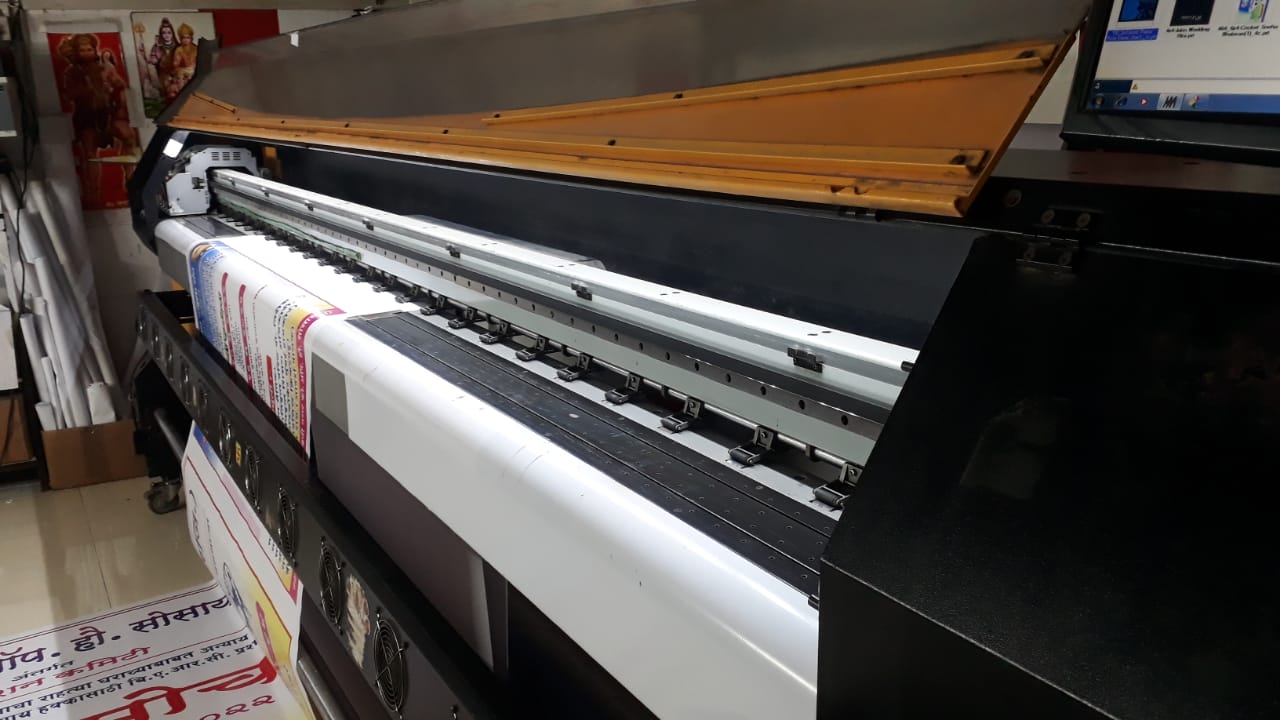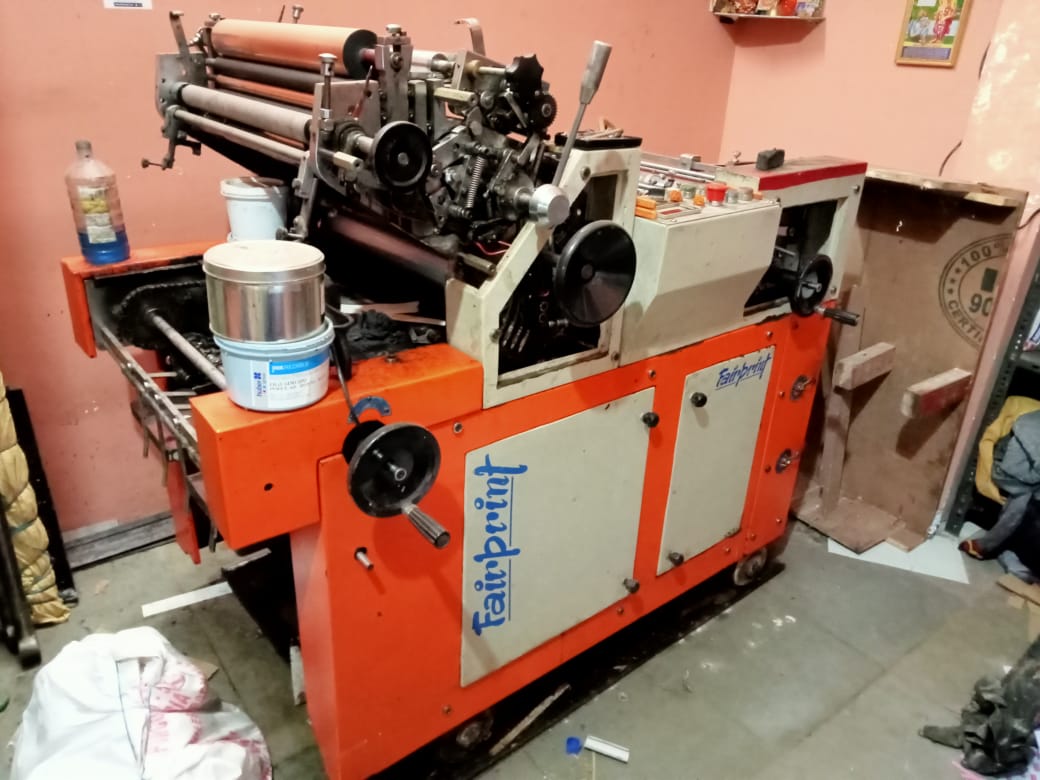This is a Rubber Printing Machine
Specifications:
- Gross Power: 36 w
- Weight: 90 kg
- Max Printing Size: A3+
- Temperature Conditions: 50-95°F
A rubber printing machine, also known as a rubber pad printing machine or a silicone printing machine, is a specialized machine used for printing designs or patterns onto various objects made of rubber or silicone materials. These machines are commonly used in industries such as automotive, electronics, medical devices, and promotional product manufacturing.
Rubber printing machines utilize a process called pad printing, which involves transferring ink from a printing plate onto a silicone pad and then onto the object being printed. This process allows for precise and detailed printing on irregularly shaped or curved surfaces.
Here are the key components and processes involved in a rubber printing machine:
- Printing Plate: The printing plate, also known as a cliché, is an etched or engraved plate that holds the desired design or pattern to be printed. The plate is made of metal or polymer and is inked before the printing process.
- Ink System: The ink system of a rubber printing machine consists of an ink cup or inkwell that holds the ink. The ink cup has a doctor blade that scrapes off excess ink from the printing plate, leaving ink only in the etched areas. The ink used is specifically formulated for rubber or silicone surfaces.
- Silicone Pad: The silicone pad is a soft and flexible pad made of silicone rubber. It transfers the ink from the printing plate to the object being printed. The pad picks up the ink from the etched design on the printing plate and then presses it onto the object with controlled pressure.
- Object Fixture: The rubber printing machine has a fixture or holding mechanism to secure the rubber or silicone object during the printing process. The object can be placed directly on the machine’s platform or held in a custom fixture that fits its shape.
- Printing Process: The rubber printing process begins with the inked printing plate. The silicone pad presses against the plate, picking up the ink from the etched areas. The pad then moves to the object fixture and transfers the ink onto the object’s surface with a rolling or pressing motion. The pressure and timing are controlled to ensure accurate and consistent printing.
- Drying or Curing: After the ink is transferred to the object, it may require drying or curing depending on the ink type. Some inks air dry, while others may require UV curing or heat treatment to set the ink and make it permanent on the rubber or silicone surface.
The specific features and capabilities of a rubber printing machine can vary depending on the manufacturer and model. Some advanced machines may offer additional functionalities such as multiple color stations for multicolor printing, programmable controls for precise ink deposition, and automatic registration systems for accurate printing on complex shapes.
It is in a good working condition.
No pending loan against the machine.
It has been Recently serviced.









